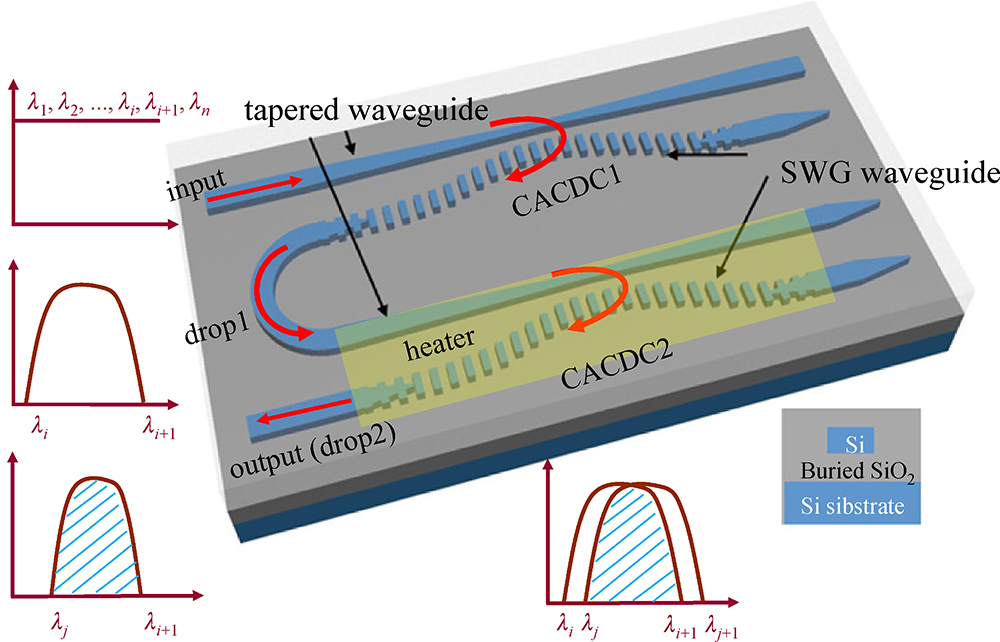Optical filters are fundamental components of wavelength-division multiplexing (WDM) systems for routing signals [
1,
2]. WDM systems, initially designed with fixed channel spacing that varies between 20 nm in coarse WDM to 0.8 and 0.4 nm in dense WDM, are now evolving to support flexible grids that meet the increasing demands for network capacity and efficiency [
3]. Hence, optical filters with flexible tunable bandwidth and wavelength are becoming increasingly important. The widely adopted technologies for tunable filters are mostly based on free-space optics [
4] or liquid crystal modulation [
5]; however, such filters are often expensive and difficult to use in high dense integration. Conversely, silicon-on-insulator (SOI) platform [
6,
7] promises a low cost, better stability, and high-density chip-scale integration; thus, attracting lots of attention in the research community. At the moment, several tunable filters on SOI have been demonstrated, including structures, that are based on microring resonators (MRRs) [
6] and Mach Zehnder interferometers (MZIs) [
7]. However, these devices provide limited bandwidth (less than 10 nm) and small free spectral range (FSR), thus cannot adequately meet the demands of high-capacity transmission applications [
8]. To solve these problems, tunable filters, which are based on cascaded grating-assisted contra-directional couplers (GACDCs), have been proposed [
9,
10]. These filters realize large tunable bandwidths without exhibiting the FSR limitation; however, the sidewall-etched Bragg gratings of these devices show the coupling length of hundreds of microns (usually more than 300 μm) [
9]. As a result, the whole device results in too much footprint on the SOI wafer.











